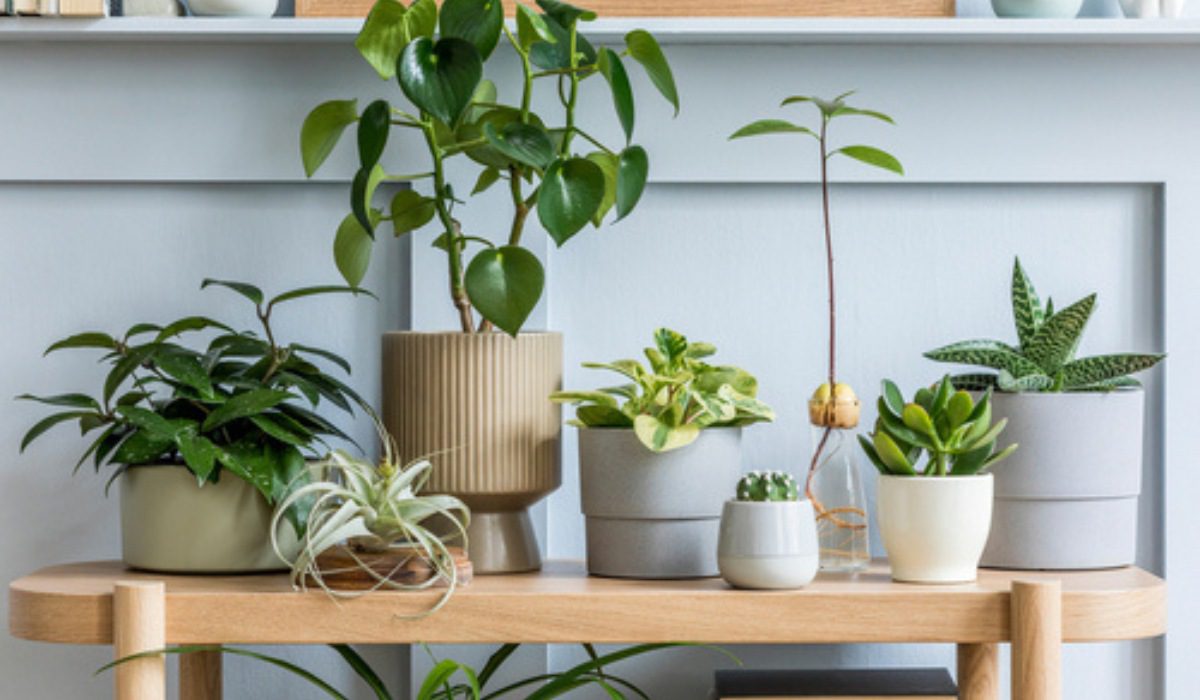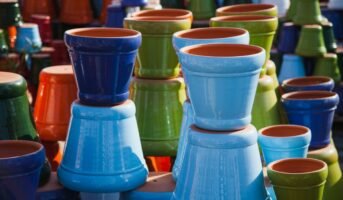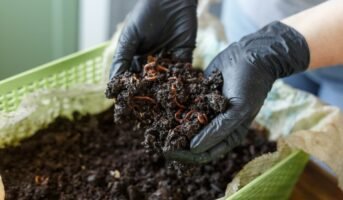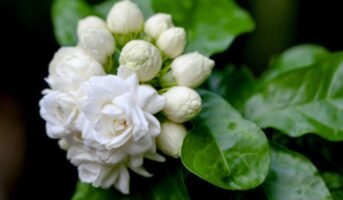Choosing the right pots for indoor plants is an important task, as it determines how well your plants will thrive. If you choose the wrong one, you may end up with dead or dying plants. That’s why it’s important to take some time to learn about potting soil, plant species, and plant size before you buy any pots.

Source: Pinterest
See Also: Ming Garden: Facts, use, benefits, growing and caring tips
Pots for indoor plants: Different types
Plastic and metal pots: Lightweight, low-cost, and available in a wide range of colours, these are popular among beginners. However, plastic and metal pots are not as good for growing indoor plants because they tend to leach chemicals into the soil.
Clay pots: Clay pots have little air pockets in them that allow water to drain out of the pot when it’s watered. These air pockets also help prevent root rot by preventing too much moisture from building up inside a pot over time.
Terracotta pots: This classic container is the go-to for container gardening. It is imperative to pair these plants with drought-tolerant species (like succulents and rosemary) or to water them frequently. Terracotta absorbs water from the soil and then dries out, so plan on watering frequently.
Glazed ceramic pots: In addition to being sturdy and heavy, these pots are available in a wide range of colours. In a glazed ceramic pot, almost any plant will thrive. Ceramic pots are the most popular if you’re looking for a decorative item that will go well with the interior decor in your home.
Now, you need to think about what kind of shape is best suited for your needs.
Choose the correct size and shape

Source: Pinterest
Choosing pots for indoor plants is a matter of taste and style.
If you have a large space, you can use one large pot. However, if your space is small and cosy, you may want to use smaller pots.
Plants should be potted in proportion to their size. For example, if you have a small plant that requires less space, then choose a small pot for it. If you have a large plant that needs more space than what’s allowed in a small pot, then select a larger one.
In container gardening, the shape is not the most important factor, but it does have an impact on how you want your indoor garden to look and function. You can choose a shape based on the aesthetic you prefer for your home.
Pots for indoor plants: Things you should know

Source: Pinterest
Finding the right pot for your indoor plant can be a challenge. There are a lot of options out there, and it’s difficult to know what’s right for you.
Here are some questions you should ask before choosing pots for indoor plants:
How much water do you want to give your plant?
If your plant needs a lot of water, then go with a clay pot that won’t dry out easily. If your plant is not very thirsty and doesn’t need much water, consider using a plastic pot instead. However, plastic should never be used in place of clay or terracotta because it can hold too much water and cause root rot.
Do you want drainage holes in the bottom of the pot?
Drainage holes will help prevent root rot but also make it more difficult to repot plants if they become rootbound during their first growing season. So keep this in mind when opting for pots with drainage holes.
Do you have a particular type of soil at home?
You can use an old paint bucket or a cereal box with holes punched if you have regular soil (such as garden soil). Different potting mixes are formulated to meet the needs of plants, such as succulents and ferns in nature. You can choose a pot based on the type of soil, such as loamy, clayey, or sandy. For example, if a plant is susceptible to root rot, it will grow well in well-drained soil, and thus, clay pots might be the best option.
How should I prepare the soil for indoor plants?
Peat moss, vermiculite, and perlite are usually included in a good indoor potting mix. In spite of their excellent moisture absorption and resistance to compaction, these soilless mixes dry out very quickly. The roots of your plants do not contain any nutrients, so you must fertilise them regularly.
FAQs
Do ceramic pots or clay pots work better for plants?
Clay pots make plants less susceptible to root rot because they absorb water. On the other hand, ceramic pots tend to break easily and aren't as easy to clean as plastic pots. Overwatering tends to be a habit for gardeners, so, a clay pot will likely benefit their plants.
What is the disadvantage of clay pots?
When exposed to heat, clay pots run the risk of cracking due to their fragility.
Housing News Desk is the news desk of leading online real estate portal, Housing.com. Housing News Desk focuses on a variety of topics such as real estate laws, taxes, current news, property trends, home loans, rentals, décor, green homes, home improvement, etc. The main objective of the news desk, is to cover the real estate sector from the perspective of providing information that is useful to the end-user.
Facebook: https://www.facebook.com/housing.com/
Twitter: https://twitter.com/Housing
Email: [email protected]











